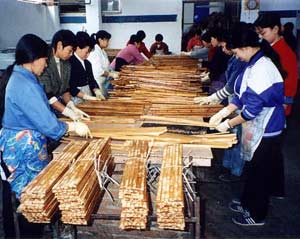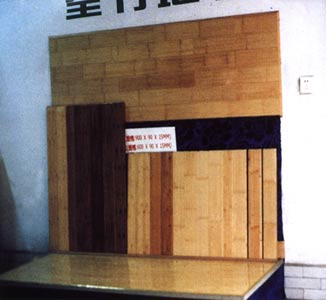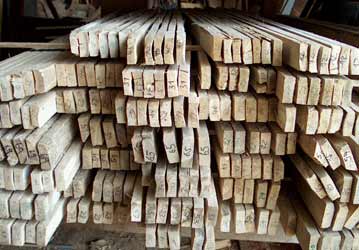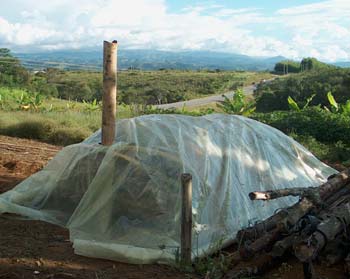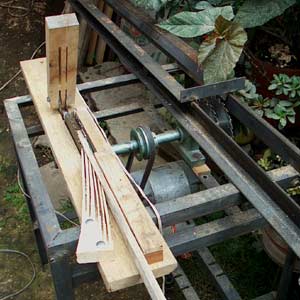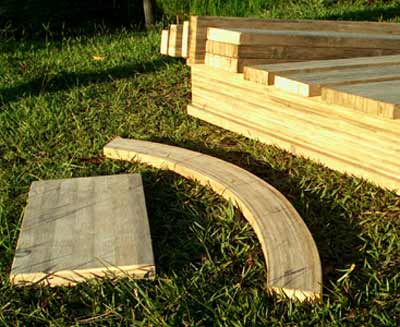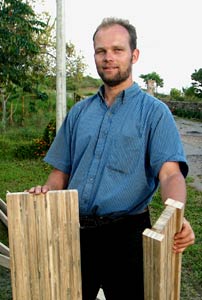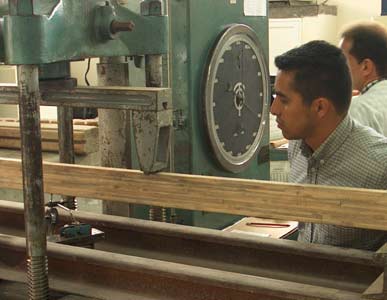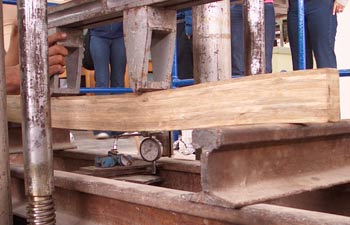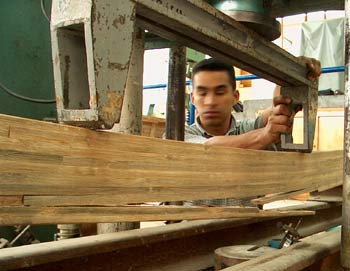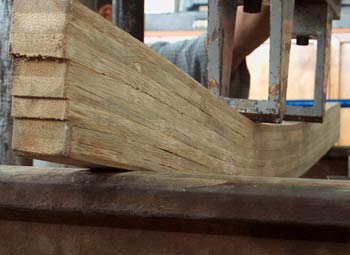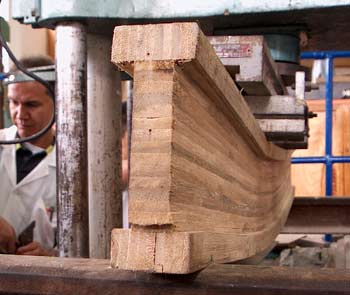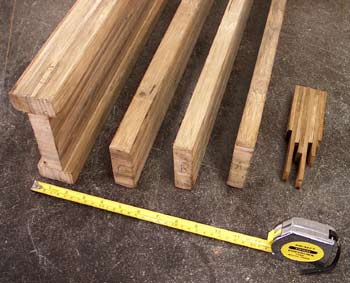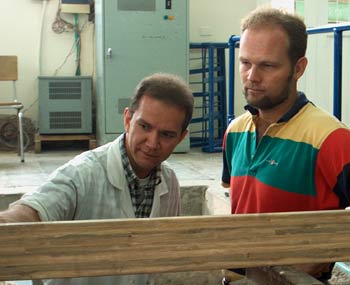In timber construction, gluelam beams are produced by glueing together
individual timber planks. These beams provide higher strength values
than conventional ones because the used timber is sorted out so that
possible weak parts got eliminated.
The
characteristic strength values
of Guadua are higher than that of timber, so the idea to produce gluelam beams
of Guadua suggests itself. High-quality boards and beams could be produced, for
which there exist diverse uses all over the world.

